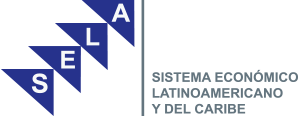ECLAC: WOMEN'S UNEQUAL PARTICIPATION IN THE DIGITAL ECONOMY AFFECTS THE DEVELOPMENT OF LATIN AMERICA AND THE CARIBBEAN
15 octubre 2013
Fuente: Taken from ECLAC Website
Fuente: Taken from ECLAC Website
Santiago, October 15- In several Latin American and Caribbean countries, women equal men in terms of Internet access, but are at a clear disadvantage when it comes to using it. This limits the personal and professional development of women, as well as the growth with equality of the region's countries as part of a new technological paradigm - according to a new study presented today by the Economic Commission for Latin America and the Caribbean (ECLAC).
Average Internet usage rates among women are 8.5% lower than among men in 10 countries with information available. This is according to the document Women in the digital economy: breaking through the equality threshold, the conclusions of which will form the basis for discussion in the twelfth session of the Regional Conference on Women in Latin America and the Caribbean, which opens today until Friday 18 October in Santo Domingo, Dominican Republic.
The digital economy includes telecommunications infrastructure (particularly broadband networks), information and communications technology (ICT) industries (hardware, software and applications) and the level of users' digital literacy.
In recent years, all countries saw an increase in the number of men and women reporting using the Internet from any access point. The gap between the two sexes only narrowed, however, in Brazil, Mexico and Uruguay. The gap widened in the other countries. The difference between men and women is almost 5% (39.3% versus 44%) in Chile - which has one of the highest Internet usage rates overall. In Peru, 26% of women and 34.1% of men report using the Internet.
This digital gender gap is more common in urban than rural areas, and mainly affects older women of all levels of education. In El Salvador, the difference between men and women with higher education is five points (70.3% versus 75.5%), while in Honduras the difference is just under three points (71.2% and 74%). In Brazil, 4.3% of women and 7.4% of men aged 65 and above report using the Internet (and this pattern of difference is repeated in countries such as Costa Rica (3.1% and 7.1%) and Ecuador (2.1% and 4.1%)).
The prevalence of Internet usage increases in proportion with the household level of income, although the gender gap is narrower in those groups where the technology is less accessible. For instance, Uruguay is the most unequal country in this regard, and 34.5% of women in the first quintile report using the Internet compared with 63% from the fifth quintile.
The inequality is only reversed in the case of waged female workers, who have higher Internet usage rates than men. This piece of information suggests that having ICT skills can be a powerful tool for women to enter the labour market.
According to statistics, almost half of the region's women (representing 50.9% of the population - or over 300 million people) have no link to the labour market: women's economic activity rates stand at 49.8% (compared to 78.7% among men), and one in 10 women is employed in domestic service (one of the most poorly paid jobs with the lowest levels of social protection).
Ensuring women's economic autonomy, increasing their participation in the labour market and recognizing the unpaid work carried out mostly by them, is one of the main challenges of the region's countries, according to ECLAC. Given that gender inequalities in the rest of society are reproduced in the digital economy, there is an urgent need for policies that prevent labour segregation, avoid wage gaps and promote a fair sexual division of labour.
According to ECLAC, there is blatant horizontal and vertical labour segregation in the world of science, despite an increase in the number of women in the field in recent years.
Horizontal segregation refers to the fact that women are concentrated in disciplines related to health, social, humanistic and natural sciences, with physical sciences and engineering dominated by men. Another expression of horizontal gender segregation is the scarce representation of women in industrial research.
Vertical segregation means that the region's female researchers have little chance of reaching the highest levels of the career ladder and landing positions of authority or senior management. According to the document: "One of the great problems for women in terms of their professional development is the conflict of roles they experience in having to deal simultaneously with family and professional demands".
In addition, the Commission highlights women's lack of participation in the production of digital content, which generates a high level of sexism. In the videogames industry, for instance, women are often represented as passive and sexual objects, while men are portrayed as active and violent subjects.
According to the study, most Latin American and Caribbean countries now have national digital strategies that have resulted in considerable progress in providing the entire population with access to ICTs. However, most do not include specific actions for promoting gender equality - although there have been noteworthy examples in Ecuador, Mexico and the Dominican Republic.








